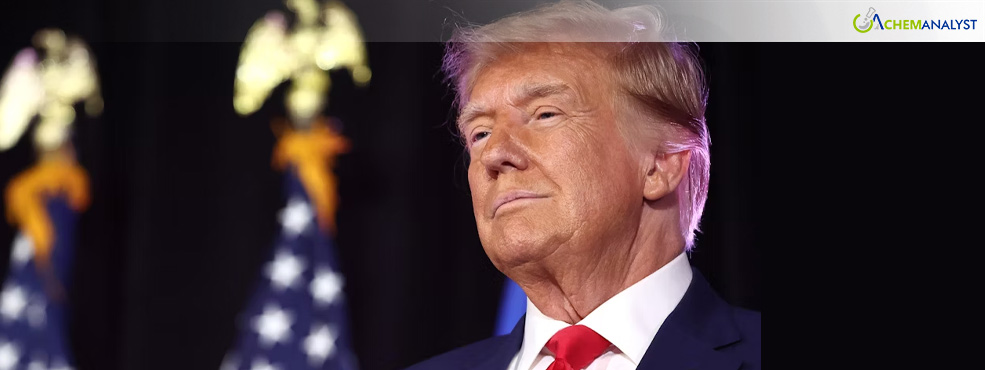EXCLUSIVE: Trump’s Stringent Tariffs to Open Doors for China-Mexico-Canada Alternatives
- 30-Nov-2024 1:00 AM
- Journalist: Timothy Greene
US President Elect Donald Trump has vowed to impose heavy tariffs on Mexico, Canada and China to restrict trade from these countries. While these tariffs can very well trigger a trade war, other countries – especially the developing ones – stand to gain a lot from the hike.
Trump, who is set to take office on January 20, announced plans to impose a 25% tariff on imports from Canada and Mexico to curb drug trafficking, especially opioid fentanyl, and address migrant crossings. Additionally, he proposed an extra 10% tariff on imports from China, possibly taking it to a whopping 60%. This is way steeper than the ones he imposed during his first term. He accused China of facilitating drug flow into the country through Mexico and threatened to increase tariffs. "Until such time as they stop, we will be charging China an additional 10% Tariff, above any additional Tariffs, on all of their many products coming into the United States of America," Trump had said during one of his election campaign rallies.
Repercussion of tariff impositions
If Trump walks his talk after resuming office, the increased tariffs will have a sizeable impact on its consumers as the increment will pass on to the retail market. For instance, US heavily relies upon meat and agricultural imports from other countries to fulfil its annual demand, a large chunk of which is fulfilled by Canada.
Similarly, US’s automotive sector is critically dependant on the North American supply chain for their industries. Imposing ridiculous tariffs would raise vehicle prices substantially. This will create a crisis situation in the economy, at least till the time his tall claims of “Make It In America” are matched.
These stringent impositions, however, come with a silver lining. They will create a sizeable market space for other countries to better position their exports.
Canada
The US imports a significant portion of its oil from Canada, particularly heavy crude oil. About 51.5% of its crude oil demand is fulfilled by Canada, and another 8.5% by Mexico. If the hikes become a reality, oil prices in the country will shoot up especially for areas relying on refineries designed for heavy crude like the Midwest.
Countries like Saudi Arabia and India have a fair shot of exporting oil to the US in the wake of rising prices. Although not a producer, India imports its majority chunk of oil from Russia – again a country laden with US sanctions.
Another major sector that will get affected is poultry and agriculture products. Currently, US consumes 22% of total meat in the world with most of its demand being met by Canada. It supplies nearly a third of US’s annual 12.7 million metric ton demand of meat according to government data.
Another top exporter of meat and poultry is Brazil, a demand it can very well fulfil. This is also an opportune time for southeast Asian countries like Vietnam and Indonesia that already supply 77% of meat from the Southeast Asia to the US.
Mexico
However strained their relations, US’s agriculture market is chiefly fulfilled by Mexico’s supply of nuts and fruits. More than 31% of their annual agricultural demand is fulfilled by Mexico. The US also imports a significant amount of sugar from Mexico under their trade agreement. Higher tariffs could impact the sugar supply and prices.
Brazil and India, the two countries that produce almost 40% of world’s sugar, could benefit immensely from the tariff hikes.
China
China is the world’s largest exporter of electronic items. 25% of US’s electronics demand and 20% of their machinery and mechanical parts demand is fulfilled by China, followed by Mexico. China also fulfils a fourth of US textile demand according to government data.
European countries like Germany, Netherlands and the UK can position their electronics sector and reap hefty rewards of 60% tariff imposition on China. Additionally, Japan can tap into the sector and increase its production to meet the US demand. Similarly, the textile sector of India and Bangladesh can benefit from the trade war. This is a golden opportunity for the textile sector.
US President-elect Donald Trump's plan to impose steep tariffs on Mexico, Canada, and China could spark a trade war, but it opens up a golden opportunity for countries like Saudi Arabia, India, Brazil, and European nations to capture lucrative new markets in oil, agriculture, and electronics. This shift could dramatically reshape global trade patterns and benefit emerging exporters.



